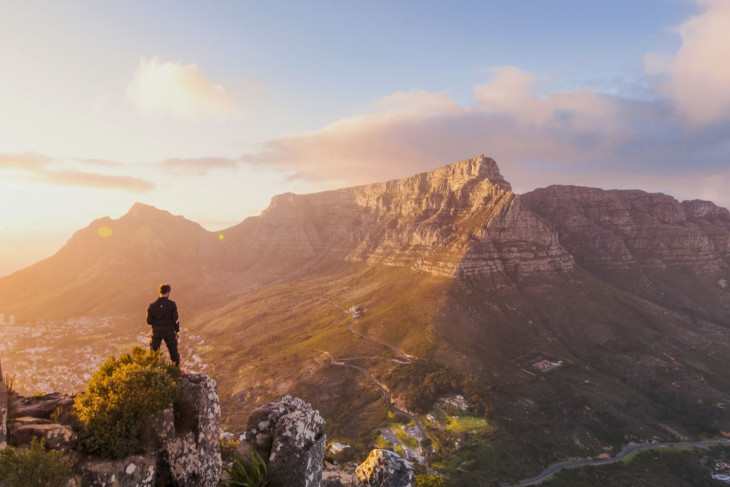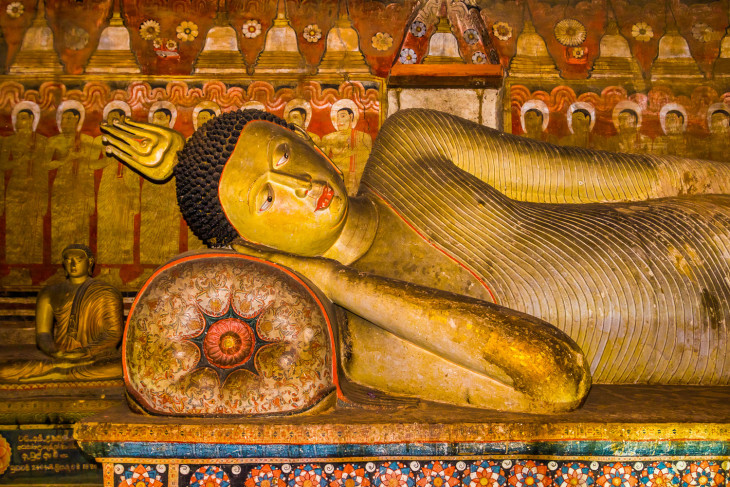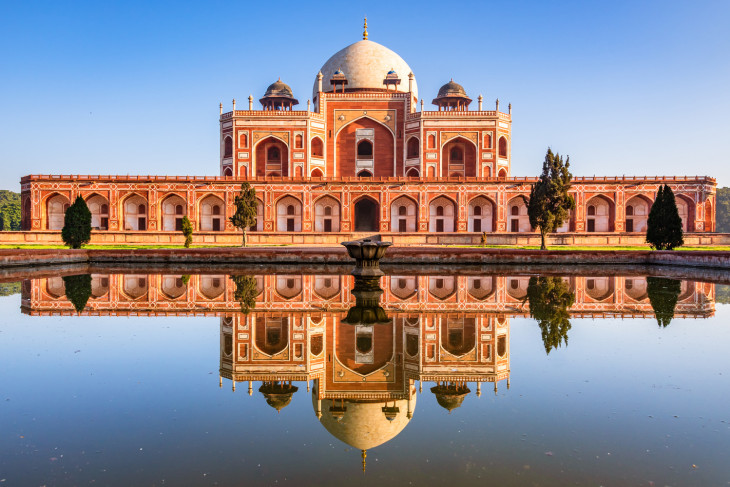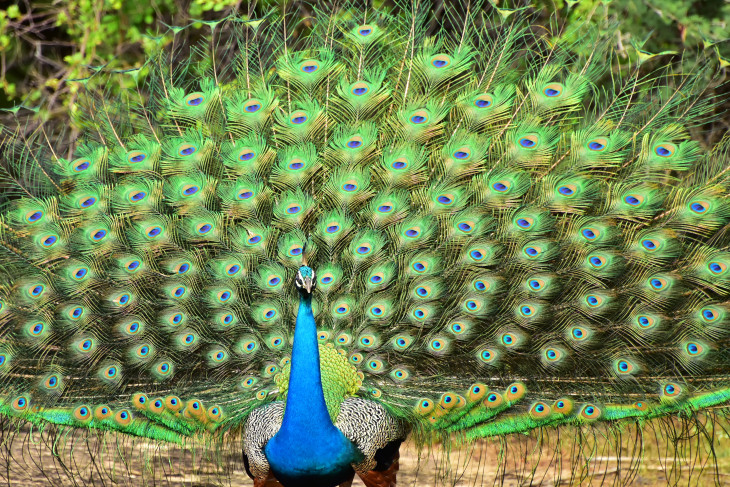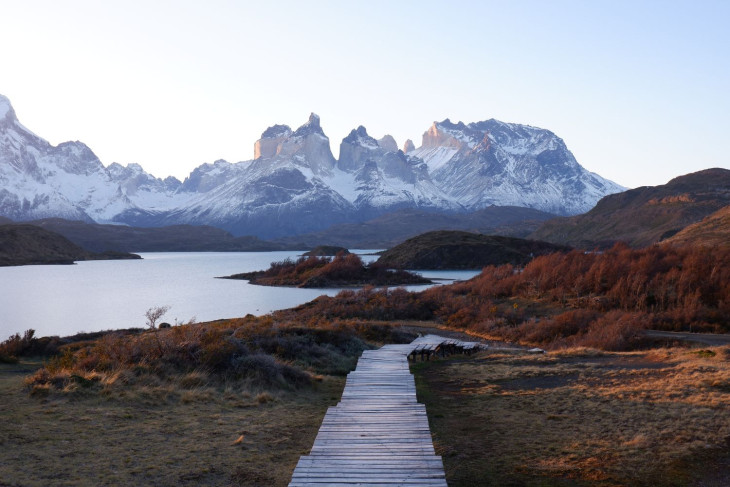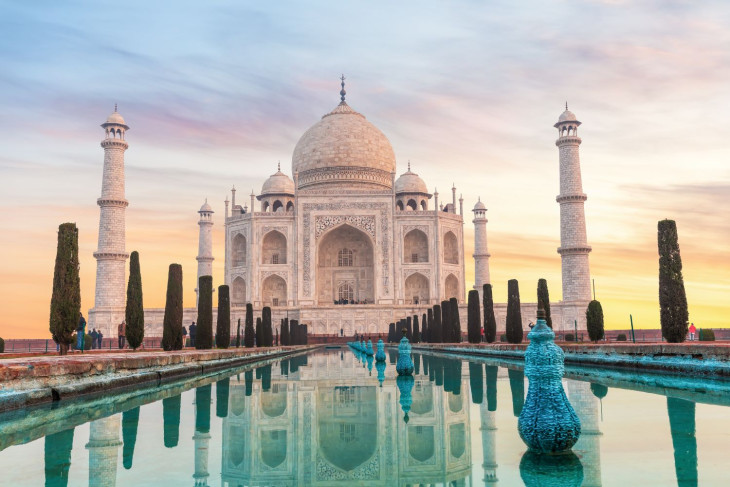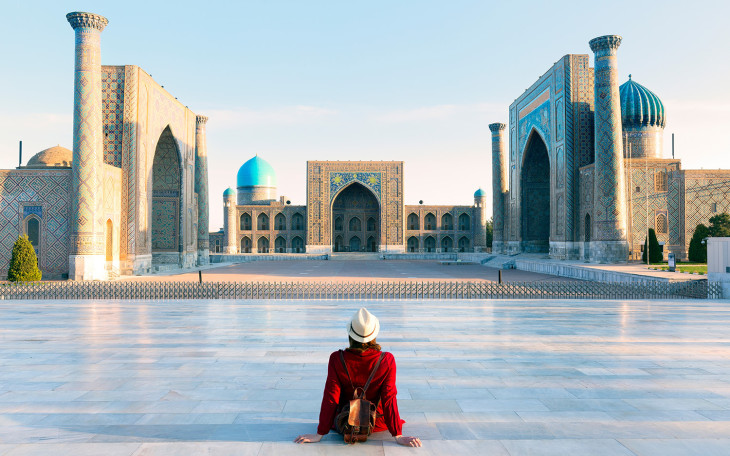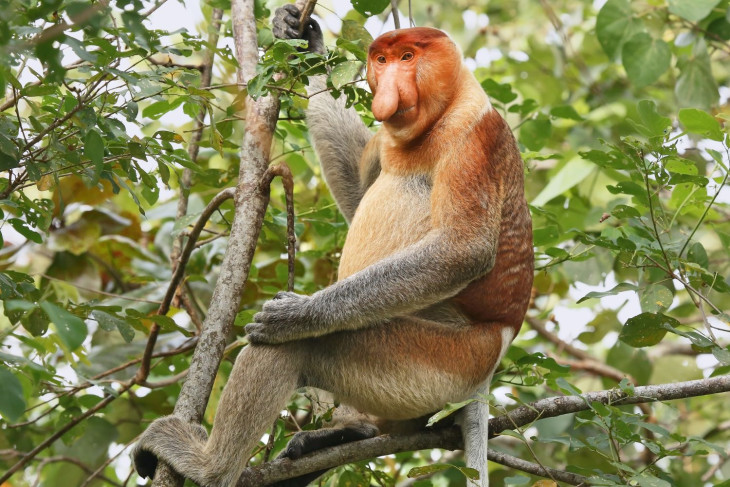-
Latin America
Latin America
- Countries (hidden space)
- Galapagos & Ecuador
- Guatemala
- Mexico
- Panama
- Peru
- Popular Attractions
- Machu Picchu
- Inca Trail
- Easter Island
- Galapagos Islands
- Patagonia
- Rio de Janeiro
- Iguazu Falls
-
Africa
Africa
- Spacer Africa
- South Africa
- Zimbabwe
- Popular Attractions
- Cape Town
- Okavango Delta
- Sossusvlei Dunes
- Victoria Falls
- The Kruger
- The Garden Route
- Masai Mara
-
Asia & Middle East
Asia & Middle East
- Asia
- Borneo (Malaysia)
- Cambodia
- India
- Japan
- Middle East
- Jordan
- Spacer Asia
- Laos
- Sri Lanka
- Uzbekistan
- Vietnam
- Popular Attractions
- Taj Mahal
- Lion Rock (Sigiriya)
- Angkor Wat
- Ha Long Bay
- Kyoto
- Petra
-
Destinations
- Latin America
- Argentina
- Bolivia
- Brazil
- Chile
- Colombia
- Costa Rica
- Galapagos & Ecuador
- Guatemala
- Mexico
- Panama
- Peru
- Asia
- Borneo (Malaysia)
- Cambodia
- India
- Japan
- Laos
- Sri Lanka
- Uzbekistan
- Vietnam
- Middle East
- Jordan
- Southern & East Africa
- Botswana
- Kenya
- Namibia
- South Africa
- Zimbabwe
- Contact Us
-
About
About
Llama Travel provides high quality holidays at the lowest possible prices.
99% recommend us Lower prices - guaranteed Financially protected by ATOL
South Africa offers everything. From vibrant cities and scenic mountain landscapes, to spotting the Big Five on game drives in the Kruger and enjoying excellent food and wine, there are endless experiences to enjoy. Whether you’re interested in history, culture, or nature travelling around South Africa gives you a real mix of it all.
Llama Travel’s South Africa Itinerary has been designed to ensure you make the most of your time in this incredible destination. Here are 7 reasons why you should visit South Africa with Llama Travel.
Thinking of travelling to Sri Lanka?
From ancient cities and misty hill towns to tea country, national parks and golden beaches, Sri Lanka offers a wonderful mix of culture, scenery and wildlife. Whether you’re planning your first visit or returning to see more, our FAQs answer the most common questions about travelling to Sri Lanka from the UK.
If you’re still deciding where to go, take a look at our Sri Lanka holidays, including the Cultural Triangle, game drives to look for leopards, scenic train rides, and stays on tropical beaches at Negombo and Bentota.
Before You Go
Q: Do I need a visa to travel to Sri Lanka from the UK?
A: Yes, all visitors to Sri Lanka, including British nationals, require an electronic Travel Authorisation (ETA), which must be obtained online in advance, and for which there is a cost. You can apply for single-entry and transit visas on the ETA website. For more information, see the website of the Sri Lanka High Commission. For British passports endorsed in any way and all other passports, please ask the Sri Lankan consulate. You need a passport with two blank pages, valid for six months after your return to the UK.
Q: What vaccinations do I need for Sri Lanka?
A: We recommend checking the latest health advice before you travel. Please consult your GP or a travel health clinic to discuss any vaccination or medication requirements for your trip. Up-to-date guidance for travellers is available from NaTHNaC.
Q: What should I pack for a holiday in Sri Lanka?
A: Lightweight, breathable clothing is ideal for the tropical coast and lowlands. If you plan to visit the hill country, bring a jumper or fleece for cooler evenings. Modest dress (shoulders and knees covered) is appreciated when visiting temples or local villages. A sun-hat, insect repellent, and a plug adaptor for Sri Lanka’s sockets are also good to have.
Practical Information
Q: What’s the weather like in Sri Lanka?
A: Temperatures in Sri Lanka vary depending on where you are. Along the coast, daytime highs often reach 30°C or more, while in the Central Highlands temperatures can fall below 10°C at night. The west and south coasts, including Bentota, are driest from December to March, while the Cultural Triangle stays warm year-round. The hill country around Kandy and Nuwara Eliya is cooler and can be misty in the mornings. Rain is possible at any time of year and can be heavy, but showers are usually short-lived.
Q: What should I know about local customs and etiquette?
A: Sri Lankans are friendly and welcoming, and visitors are treated with kindness and respect. When visiting temples, cover your shoulders and knees, remove shoes and hats, and avoid turning your back to Buddha statues for photos. Greeting people with “ayubowan” is considered polite, and modest behaviour is appreciated throughout the country.
Q: Is English widely spoken in Sri Lanka?
A: Yes. English is widely spoken in hotels, tourist areas and many restaurants, making it relatively easy for UK travellers to communicate. You’ll find local English proficiency is good, though in rural areas you may encounter more language variety.
Health and Safety
Q: Is Sri Lanka safe to travel to?
A: Overall, yes. Sri Lanka is a friendly, accessible destination. As in any country, keep an eye on your belongings, avoid risky areas after dark and follow local advice. Llama Travel trips use trusted local partners and well-vetted hotels.
Q: What happens if I get ill while in Sri Lanka?
A: If you feel unwell while in Sri Lanka, please let our local partners or your hotel staff know straight away. They can arrange for a doctor or hospital visit if needed. Medical facilities in major towns and cities are generally good, with English-speaking doctors available, but services can be more limited in rural areas, and a transfer may be required for hospital care. We recommend having comprehensive travel insurance that covers medical treatment and repatriation.
Connectivity and Communication
Q: What are the options for mobile data and SIM cards in Sri Lanka?
A: Stay connected easily. Most UK mobile networks offer roaming services in Sri Lanka, though charges may apply. Alternatively, local SIM cards are available at airports or convenience stores, and many hotels offer Wi-Fi. If you prefer, an eSIM can be pre-loaded before you travel.
Getting Around
Q: How do I get around in Sri Lanka?
A: Getting around Sri Lanka is straightforward, with several transport options depending on your route and budget. Many visitors choose to travel by private vehicle with a driver and guide, which is the most comfortable and flexible way to explore, especially as roads can be narrow and journeys take longer than expected in hilly areas. Trains are a memorable way to see the country, particularly through the hill country between Kandy, Nuwara Eliya and Ella, where the scenery is incredible, though services are slow and often busy. Buses connect most towns and are cheap, but they can be crowded and less comfortable. Domestic flights are available between some major destinations and are the quickest way to cover long distances. Taxis and tuk-tuks are easy to find in towns and coastal areas for short trips, with fares usually agreed in advance or by meter.
With Llama Travel, transport is arranged for you using private, air-conditioned vehicles and scenic train rides where available, all of it included in the trip.
Food and Drink
Q: What’s the food like in Sri Lanka?
A: Sri Lankan food is full of flavour, with a wide variety of dishes influenced by the country’s mix of cultures. A typical meal includes rice and curry, served with vegetables. Along the coast, fresh seafood is a highlight, while inland regions are known for vegetable and lentil curries. You’ll also find plenty of tropical fruits and Ceylon tea grown in the hill country. Many dishes are spiced rather than hot, and vegetarian options are easy to find, though some may include fish stock or shrimp paste. If you have dietary requirements, let your guide or hotel know.
Q: Can I drink tap water in Sri Lanka?
A: It’s safest to stick with bottled or well-filtered water. Ice and raw salads may be washed in water of uncertain quality, so caution is wise.
What to See
Q: What are the highlights of a Sri Lanka holiday?
A: Sri Lanka combines history, nature and relaxation in one journey. Explore the ancient cities and rock fortress of Sigiriya in the Cultural Triangle, visit Kandy to see the Temple of the Sacred Tooth, travel through the tea-covered hills of the Central Highlands, and go on safari in Yala National Park to spot elephants and leopards. Finish your trip by relaxing on the south coast, where golden beaches provide the perfect end to your holiday.
Q: How many days do I need for a Sri Lanka holiday?
A: A comfortable trip is around 10–14 days, allowing time to explore the cultural heartland, enjoy some nature/wildlife and relax on the coast. Shorter visits are possible but may feel hurried.
Q: What to see in Negombo?
A: Negombo is a relaxed coastal town close to Colombo Airport, making it a convenient first or last stop on your trip. Its wide sandy beach is ideal for a gentle walk or a sunset drink. You can explore the Dutch-built canal network, the fish market, and the town’s colonial-era churches. Negombo also has good seafood restaurants and small local shops, offering an easy introduction to life in Sri Lanka.
Q: What to see in the Cultural Triangle?
A: The Cultural Triangle, in the centre of Sri Lanka, is where much of the island’s ancient heritage can be found. Dominated by Sigiriya Rock Fortress, this region is home to centuries of history, art and religion. Climb Sigiriya to see its famous frescoes and enjoy the views from the summit, then visit the Dambulla Cave Temples, where over a hundred Buddha statues and vivid murals line the chambers. Nearby Polonnaruwa, once a royal capital, offers a glimpse of medieval Sri Lanka through its temples, palaces and sculptures. There is also the chance to spot wildlife, including herds of wild elephants herds of wild elephants. Some wildlife reserves can get overcrowded. Llama Travel offers a game drive in the less-visited Wasgamuwa National Park.
Q: What to see in Kandy?
A: Kandy is Sri Lanka’s cultural capital, set around a scenic lake and surrounded by green hills. Its main attraction is the Temple of the Tooth, one of Buddhism’s most sacred sites. You can also visit the Royal Botanical Gardens in nearby Peradeniya, stroll around Kandy Lake, or explore the lively central market. In the evenings, traditional music and dance performances give a glimpse of local culture.
Q: What to see in Yala?
A: Yala National Park is one of the best places in Sri Lanka to see wildlife. Although it can get busy, it is well worth visiting and offers possibly the best chance of spotting leopards in Sri Lanka. There are also elephants, crocodiles, deer, and many species of birds. Safaris take place in the early morning or late afternoon, when animals are most active. The park’s varied landscapes, from open plains to lagoons and forest, make every drive different and full of interest.
Q: What to see in Bentota?
A: Bentota is one of Sri Lanka’s most popular beach resorts, known for its long sandy beaches and calm seas. It’s a great place to relax at the end of your trip, with opportunities for boat rides on the Bentota River, and water sports such as snorkelling or sailing. The nearby town of Galle, with its historic fort and colonial streets, also makes an excellent day trip.
Still have questions about travelling to Sri Lanka?
Our team is happy to help. Call us on 020 7263 3000 or explore our Sri Lanka holidays to start planning your trip.
Thinking of travelling to India?
From the Taj Mahal to Rajasthan’s royal palaces and the Himalayan Foothills, India offers an unforgettable mix of colour, culture and contrasts. Whether you’re planning your first Golden Triangle tour or returning to explore further, our FAQs answer the most common questions about travelling to India from the UK.
If you’re still deciding where to go, take a look at our India holidays, including Shimla & Himalayan Foothills, Goa Beach, the Sacred Ganges, and Amritsar extensions.
Before You Go
Q: Do I need a visa to travel to India from the UK?
A: Yes, all visitors to India, including British citizens, require a visa to visit India. Most travellers apply online for an eVisa through the official government website https://indianvisaonline.gov.in/evisa/. An eVisa can be obtained online between 4 days and 30 days prior to arrival, for which there is a cost. We recommend applying for this as early as possible (but not earlier than 30 days before arrival) as the process can be more complicated than for some other countries and specific documents and information are requested. Approval is normally emailed within a few days - print this confirmation to show on arrival.
In addition to the eVisa, you will also need to complete an eArrival card online within 72 hours prior to your arrival in India, at https://indianvisaonline.gov.in/earrival/ . Once you have submitted the eArrival card, a pdf of your submission should automatically be generated. We recommend you print this out or save this to your phone.
Q: What vaccinations do I need for India?
A: For the most up-to-date guidance, visit NaTHNaC or speak with your GP or a travel health clinic before travelling.
Q: What should I pack for a holiday in India?
A: Pack light, breathable clothing such as cotton shirts, loose trousers and long skirts to stay cool and comfortable. A scarf or pashmina is useful for visiting temples, where modest dress is expected. Men should also avoid sleeveless tops or shorts that expose the knees. Comfortable footwear is essential, as you’ll often remove your shoes in temples.
If you’re travelling in the north of India between December and February, bring a jumper or fleece for cooler evenings. In Shimla, temperatures can drop sharply in winter, and snow is possible, so warm clothing is essential. During the monsoon season (June to September), a rain jacket is useful.
Insect repellent is advisable, especially when visiting Ranthambore. Electricity in India is 230V. Most sockets are D-type (3 round pins). We recommend you carry a copy of your passport with you at all times. Please bring any medication you may require from the UK. Sunscreen and hand sanitiser are also always good to have on hand.
Practical Information
Q: What’s the weather like in India?
A: India’s climate varies widely across the country, so the best time to visit depends on where you’re going. In the north, including Delhi, Agra and Rajasthan, the most pleasant weather is from October to March, with warm days and cooler evenings. From April to June, temperatures rise and can be very hot before the monsoon arrives.
In the south, the climate is generally warmer year-round, with the monsoon bringing heavy rain between June and September. Hill stations such as Shimla are cooler, especially from December to February, when evenings can be cold and snow is possible.
Q: What should I know about local customs and etiquette?
A: Modesty is valued in India, particularly in rural areas and places of worship. Shoulders and knees should be covered, and shoes removed before entering temples or private homes. Public displays of affection are rare.
Nevertheless, you may find that locals are very friendly and curious, and it’s common for people to ask where you’re from or even request photos. Personal space is less defined than in the UK, so people may stand closer during conversations. This is normal and well-intentioned.
Q: Is English widely spoken in India?
A:Yes. English is widely used in hotels, restaurants and tourist areas, and tourist guides will speak good English. India has 22 official languages and hundreds of regional dialects, so many people speak their local language at home. However, anyone working in tourism is likely to speak English. Learning a few simple Hindi words, such as namaste (hello) and dhanyavaad (thank you) is always appreciated.
Q: What is the tipping culture in India?
A: Tipping is common and appreciated. Around 10% is suitable in restaurants (unless a service charge is included). For guides and drivers, £2–3 per person per day is a good guideline on a group tour. Small tips for porters or hotel staff are also welcome. Your guide can help with local norms if you’re unsure.
Health and Safety
Q: Is India safe to travel to?
A: Yes. India is generally safe for visitors, including solo travellers, particularly when travelling with an organised tour like Llama Travel’s. We work only with trusted local partners, experienced drivers and carefully chosen hotels to ensure comfort and security. As anywhere, keep an eye on your belongings, avoid isolated areas after dark and follow your guide’s advice. If you ever need help, our local representatives are always available.
Q: What happens if I get ill while in India?
A: Minor stomach upsets can happen when adjusting to new food or climate. Eat freshly cooked food, avoid raw salads, and drink bottled or filtered water. If you do feel unwell, hotels can arrange a doctor, and there are good private hospitals and clinics in most cities. Always travel with comprehensive insurance covering medical treatment and repatriation. Keep your policy details handy and let your guide know if you need assistance.
Connectivity and Communication
Q: What are the options for mobile data and SIM cards?
A: Staying connected in India is straightforward. If your UK mobile provider includes India in its roaming plan, you can use your phone as usual. Otherwise, consider an eSIM such as Airolo, or purchase a local SIM card from networks such as Jio, Airtel or Vi. You’ll need your passport and visa details for registration, which your guide can help with. Wi-Fi is widely available in hotels and many cafés.
Getting Around
Q: How do I get around in India?
A: Getting around India is part of the adventure. Travelling by train or road offers a closer look at everyday life and the country’s changing landscapes. However, roads can be busy, and journeys may take longer than expected, with everything from tuk-tuks to cows sharing the way. Roads between major cities are generally good, though driving conditions can vary. Many travellers prefer to hire a car with a driver or join an organised tour for comfort and peace of mind. With Llama Travel, you’ll travel in private air-conditioned vehicles with experienced local drivers, ensuring a smooth and comfortable journey between cities.
Domestic flights are the quickest way to cover long distances, with good connections from Delhi and Mumbai to most parts of the country. However, flights between smaller cities often route through one of these hubs, so journey times can be longer than expected.
India’s rail network is one of the largest in the world, carrying millions of passengers every day and reaching almost every corner of the country. Travelling by train is a memorable way to experience India’s culture and scenery. Major stations can be busy and lively places, with clear signage in English, porters to help with luggage, and separate areas for reserved ticket holders.
Trains range from modern express services to slower local routes. Express and Superfast trains, such as the Shatabdi and Rajdhani Express, are fast and comfortable, often including meals. Mail and Passenger trains are slower and used mainly by locals. Carriages vary in comfort: First AC offers private cabins, AC 2-Tier and AC 3-Tier have sleeping berths, and AC Chair Class is ideal for daytime journeys. Sleeper Class is more basic, and General Class is unreserved and often crowded.
The Shimla Toy Train is one of India’s most famous and scenic rail journeys. Built during the British Raj, it winds slowly through forests, tunnels and mountain villages as it climbs to the hill station of Shimla. The ride is slow and the carriages basic, with simple seating and limited facilities, but it’s a charming, historic experience and a wonderful way to enjoy the Himalayan foothills.
Train tickets should always be booked in advance, either online at irctc.co.in/nget/ (which opens for sale 30 days before departure) or through a travel company such as Llama Travel.
Food and Drink
Q: What’s the food like in India?
A: Indian food is wonderfully varied, with each region offering its own specialities. In the north, try creamy butter chicken, paneer curries and fresh naan bread. Rajasthan is known for rich dishes like dal baati churma, while the south features lighter, coconut-based curries, crisp dosas and lentil stews. Street food is delicious but best enjoyed at reputable stalls or with your guide’s advice. Vegetarians are well catered for throughout India, and hotels usually provide both local and Western options. Don’t leave without trying a cup of masala chai, the sweet spiced tea served everywhere from roadside stalls to palace hotels.
Q: Can I drink tap water in India?
A: Always drink bottled or filtered water and avoid ice unless you’re sure it’s made from purified water. It’s safest to avoid tap water. Drink bottled or filtered water, which is widely available, and use it for brushing your teeth. Many hotels now offer refill stations to reduce plastic waste.
Q: Can I drink alcohol in India?
A: Yes, alcohol is available in most hotels and restaurants, though some states, such as Gujarat and Bihar, have restrictions. Beer, gin and whisky are common, while wine is less widely available. Always check local regulations, and note that some hotels do not serve alcohol during religious holidays.
What to See
Q: What is India’s Golden Triangle?
A: The Golden Triangle is India’s most popular travel route, linking Delhi, Agra and Jaipur in a circuit of around 720 kilometres. It’s the perfect introduction to northern India, combining magnificent architecture, rich history and vibrant local life, all within easy travelling distance of each other.
Most travellers begin in Delhi, India’s bustling capital, where Mughal and colonial landmarks stand alongside modern India. Highlights include Humayun’s Tomb, Qutub Minar, India Gate and the lively markets of Old Delhi. From Delhi, it’s about four hours by road to Agra, home to the world-famous Taj Mahal, best seen at sunrise, and the impressive Agra Fort.
From Agra, it’s around five hours by road to Jaipur, known as the Pink City. Here you’ll find the Amber Fort, the ornate City Palace, and the Hawa Mahal (Palace of Winds), along with colourful bazaars selling jewellery, textiles and crafts.
Many travellers extend their journey to include Ranthambore National Park, about three and a half hours from Jaipur, for a chance to see Bengal tigers and other wildlife on safari.
A typical Golden Triangle trip lasts seven to ten days, with two or three nights in each destination. Llama Travel’s Taj, Tigers & Temples of India holiday follows this route, combining the highlights of Delhi, Agra and Jaipur with two nights in Ranthambore National Park for a well-rounded and memorable first visit to India.
Q: How many days do I need for the Golden Triangle?
A: A week is ideal to explore the Golden Triangle comfortably, usually three nights in Delhi, one in Agra and three in Jaipur. Adding Ranthambore requires an extra two nights to allow time for safaris and relaxation.
Q: Where should I go in Rajasthan?
A: Rajasthan is one of India’s most fascinating regions, known for its grand forts, palaces and desert landscapes. Many travellers extend their Golden Triangle journey to explore more of this colourful state.
From Jaipur, it’s about six hours by road to Jodhpur, known as the Blue City for its painted houses. Dominated by the Mehrangarh Fort, Jodhpur offers incredible views across the old town and a mix of history, markets and local life.
From Jodhpur, it’s around five hours to Udaipur, often called India’s most romantic city. Set around Lake Pichola, Udaipur is famous for its City Palace, tranquil boat rides and ornate havelis. Many visitors spend time relaxing here at the end of their trip.
Travelling between Rajasthan’s cities reveals the quieter side of India, with small villages, camel carts and colourful roadside markets. Those with more time can also visit Jaisalmer, on the edge of the Thar Desert, to explore its golden fort and take a short camel ride among the sand dunes.
Q:Where should I go in the Himalayan foothills?
A: The Himalayan foothills offer a peaceful contrast to northern India’s busy cities, with cooler air, pine forests and colonial charm. The main place to visit is Shimla, once the summer capital of British India, set high in the hills at around 2,200 metres. It’s known for its grand architecture, mountain views and relaxed pace of life.
Nearby hill towns such as Kufri and Chail are also worth exploring for their scenic walks and quiet atmosphere, and the journey to Shimla itself, often taken on the historic Shimla Toy Train, is one of India’s most beautiful railway routes.
This region is best visited from March to June and September to November, when the weather is clear and pleasant. From December to February, temperatures can drop and snow is possible, but it is still a good time to travel.
Q: Where should I go in Goa?
A: Goa, on India’s west coast, is the country’s most popular beach destination and the perfect place to relax after exploring northern India. The region is known for its palm-fringed beaches, Portuguese-influenced towns and laid-back atmosphere.
The main choice is between North Goa and South Goa. North Goa is livelier, with markets, beach cafés and a wider range of restaurants and nightlife. South Goa is quieter, with long sandy beaches, small fishing villages and boutique resorts ideal for unwinding at the end of your trip.
The best time to visit is from November to March, when the weather is dry and sunny.
Still have questions about travelling to India?
Our team is happy to help. Call us 020 7263 3000 or explore our India holidays to start planning your trip.
The Galapagos Islands are home to some of the planet’s most unique wildlife and are famous for inspiring Charles Darwin’s Theory of Evolution. Visiting the islands today offers the chance to see the same extraordinary species that Darwin observed on the Beagle in the 19th century. A holiday to the Galapagos is a once-in-lifetime experience, and combining it with the snow-capped peaks of the Andes, the lush Amazon Rainforest and the colonial charm of Cuenca makes for an unforgettable journey through Ecuador.
Llama Travel’s Galapagos & Ecuador itineraries has been designed to ensure you make the most of your time in this incredible destination. Here are 7 reasons why you should visit Galapagos & Ecuador with Llama Travel.
Jordan is a land of timeless beauty and rich history, where ancient cities rise from the desert. Whether you’re walking through the lost city of Petra, floating in the Dead Sea, or watching the sunset over the sands of Wadi Rum, Jordan offers moments that stay with you long after your journey ends. Llama Travel’s Jordan itinerary has been designed to ensure you make the most of your time in this incredible destination. Here are 7 reasons why you should visit Jordan with Llama Travel.
Sri Lanka is home to historic sites, scenic rail journeys and diverse landscapes. From climbing ancient rock fortresses and spotting leopards on game drives in Yala National Park to discovering the cultural triangle and travelling on one of the world’s most scenic rail routes through the tea country, Sri Lanka offers endless adventures.
Llama Travel’s Sri Lanka itineraries are designed to help you experience the best of Sri Lanka at a comfortable pace. Here are 7 reasons why you should visit Sri Lanka with Llama Travel.
Chile is one of South America’s most rewarding destinations, offering a mix of scenic landscapes, vibrant cities and unique natural wonders. From hiking through the epic Torres del Paine National Park to unwinding in the Chilean Lake District with its volcanoes and crystal-clear lakes, there’s a never-ending array of attractions to discover.
At Llama Travel, we focus on creating high-quality holidays that give you flexibility, security and great value for money. See below why our Chile holidays really are better!
India is one of Asia’s most rewarding destinations, offering a mix of grand monuments, rich traditions, vibrant cities and unique wildlife. From exploring the crowded streets of Old Delhi to watching the sun rise over the Taj Mahal in Agra, there’s a lot of history and culture to take in. Throughout the trip, food plays a central role, from delicious samosas to thalis packed with lentils, fresh breads and chutneys.
Llama Travel’s India itineraries are designed to ensure you make the most of your time in this incredible destination. Here are 7 reasons why you should visit India with Llama Travel.
From dazzling Silk Road cities and ancient desert fortresses to colourful bazaars and warm, welcoming hospitality, Uzbekistan is a destination that never fails to surprise and inspire. Llama Travel’s Uzbekistan itinerary has been designed to ensure you make the most of your time in this incredible destination. Here are 7 reasons why you should visit Uzbekistan with Llama Travel.
Borneo is one of the world’s great wildlife destinations, home to ancient rainforests, vast winding rivers and rare animals. Llama Travel’s Borneo holidays are carefully planned so you make the most of your time in Malaysian Borneo. Sepilok and the waters of the Kinabatangan River, offer the best opportunities to see orangutans up close, as well as other amazing jungle wildlife, including pygmy elephants, proboscis monkeys and hornbills. The lively streets of Kuching, Borneo’s most interesting city, provide a contrast to the wildlife, and you can even add a relaxing beach stay on Gaya Island after an unforgettable mix of wildlife and landscapes.

